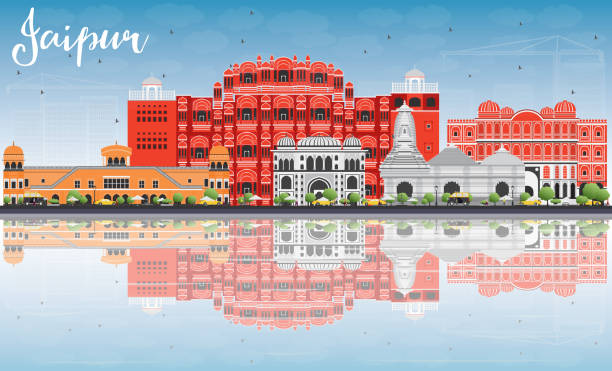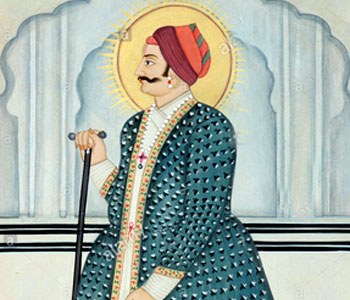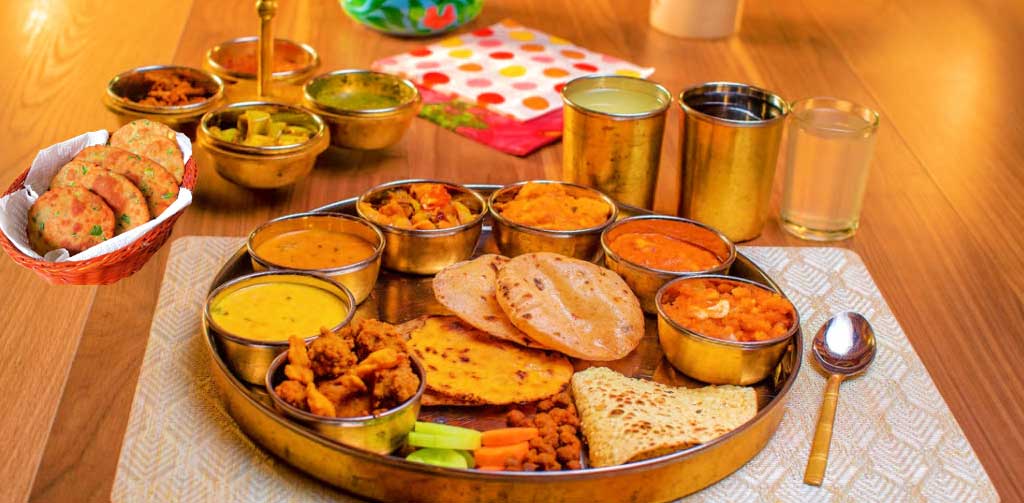
“The pink city of India, where every corner tells a story”
Jaipur, the capital city of Rajasthan is a place where history and culture come alive. Furthermore, a place where the past and present blend seamlessly to create a vibrant cityscape. Come along to unravel the past chronicles of Jaipur City and splurge on the delicious and mouth-watering delicacies the city unfurls.
Building Jaipur
THE MAKING OF THE FIRST PLANNED CITY OF THE NORTHERN INDIA
ANCESTRY
The history of Jaipur City is deeply correlated to the history of its founder Sawai Jai Singh II and his Kachchwaha Rajput clan. Kachchwaha belonged to the Kshatriya or the warrior caste of Hindus. With their brilliant soldiering and a knack for lucrative alliances, they built a special relationship with the Mughals that brought them real power, influence and wealth. They ruled the kingdoms of Mewar (Udaipur) and Marwar (Jodhpur) from the glorious Amber Fort.
SAWAI JAI SINGH II- The Founder of Jaipur

Three rulers later, Jai Singh II, a child prodigy, at the age of 11 came to the throne. He had a good education and was trained by the best teachers and scholars in art, science, philosophy and military affairs. The impressive giant stone instruments which he devised for the open-air observatories at Jaipur, Delhi, Ujjain and Varanasi stand testimony to his scientific and architectural prowess.
NEW CAPITAL CITY
After ascending the throne, Jai Singh II shifted his capital from Amber to Jaipur which lies 11 km apart due to increased population and water scarcity. Jaipur was a small region near the major city of Amber. Jai Singh II studied the architecture of several European cities and drew up plans for constructing a larger and well-planned city.
Jai Singh II consulted his best mathematicians, astronomers and the Shilpa Sastra, a traditional Hindu architectural treatise before making the blueprint for the new city. Jai Singh also sought advice from a Bengali Scholar, Vidyadhar Bhattacharya, who was a Hindu Priest architect (Shaspati), to aid him decide the outline of the city.
The foundation stone was laid by Maharaja Jai Singh II in 1727 and Vidyadhar Bhattacharya was asked to design the ‘Pink City. It took 4 years for the city’s major places- the roads, the square, palaces and the fortification of the boundaries-to come to form.
JAIPUR – The Naming
The name ‘Jaipur’ was a two-in-one compliment as ‘Jai’ means victory and was also the founder’s first name, Maharaja Jai Singh II.
ARCHITECTURE
Following the principles of Shilpa Shastra, the Indian Architecture, the town of Jaipur is built in a grid system, a nine-part Mandala (9 major divisions/blocks) known as the ‘Pithapada’. The centre was designed of seven rectangles which comprised the City Palace complex, containing the palace itself, the administrative quarters, the Jantar Mantar (the amazing astronomical observatory) and the Janana Mahals (women’s palaces), which housed the many wives of the Maharaja.
To ensure security, Jaipur city was encircled by huge fortification walls which opened at seven strong gates. These huge ramparts built surrounding the city strengthened the security of Jaipur City.
POST-DEATH
After the death of Jai Singh in 1744, his sons fought for power and unworthy successions led to the city being open to intrusion by neighbouring states. Rajputs and Marathas took over most of Jaipur.
TREATY WITH THE BRITISH – Emerging of Rajputana
In 1818, during the British reign, Maharaja Jagat Singh of Jaipur along with several Maharajas of the north-west princely states signed a treaty with the British under which they could continue to have control of their states but would be collectively supervised by the British under a new name, Rajputana.
THE PINK COLOR
Later in 1876, Maharaja Ram Singh adorned the city in pink colour, which is supposed to be associated with hospitality, to welcome the Prince of Wales (later King Edward VII) to the city; thus it acquired the name Pink City.
AFTER INDEPENDENCE
After Independence, Jaipur was chosen as the capital of Rajasthan, formed from the amalgamation of Jaipur, Jodhpur, Jaisalmer, Bikaner and other Rajput states, as a tribute to both Jai Singh and Bhattacharya.
JAIPUR TODAY
Today, Jaipur is one of the most popular tourist destinations in India. It has retained its unique flavour and cloud-world harm. It is a bustling trading centre with colourfully set bazaars, people sporting blood-red turbans, puppet sellers and festivals and fairs. Millions of domestic and international tourists swarm its beautiful hotels and palaces to relive its royal past. Many of the ancient palaces have been transformed into heritage hotels
Presently, Sawai Padmanabh Singh and his Royal Family live in The City Palace of Jaipur.
Flavours of Jaipur
A WALK ALONG THE SCRUMPTIOUS TREATS JAIPUR HAS TO OFFER

The cuisine of Jaipur reflects the royalty of the city. Foods are enriched with lots of ghee, mawa, and dry fruits and are very nutritious. The food offered here is mostly vegetarian but is a little high in terms of calories, as a lot of butter and ghee is used in the preparation of cuisines.
To experience the Jaipurian food culture within a meal, Rajasthani Thali is the way forward.
RAJASTHANI THALI:
A typical Rajasthani thali includes dal baati churma (round-shaped bread with a variety of lentils), gatte ki sabzi (gram flour balls in curd gravy and spices), rotis of bajra, jowar, makka or missi roti (bread of pearl millet, corn or whole-wheat flatbread), panchmela dal (concoction of five different lentils), ker sangri (pickle), boondi chaos (flavoured buttermilk), pulao (steamed rice) and papad. For dessert, there is gud ka ladoo (edible gum sweet), moong dal halwa or Imarti (circular flower-shaped dessert). All in all, it is a gastronomic delight!
RAJASTHANI DISHES
Dal-Bati Churma: It is made of three components of bati, dal, and churma. Dal is lentils, bati is a baked wheat ball, and churma is powdered sweetened cereal.
Chapattis/Rotis: Bajre Ki Roti, Makki Ki Roti, Missi Roti, Jau-Channa Ki Roti, Besan Ki Roti, Cheelra, Paratha, Puri, Methi Puri, Rumali Roti… the list is endless.
Rajasthani Subji(curries): Gatte ki subji, Rajasthani Kadhi, Mangori, Pakodi and Ker Sangari, Chakke Ki Sabji, Besan Ka Gatta etc. The traditional subjis are part of the daily meals here.
- Gatte ki subji: Savoury gravy prepared with buttermilk and Indian spices and dumping made of steamed gram flour.
- Ker Sangari: Comprises Indian spices and usually comes in dry areas.
- Rajasthani Kadhi: Sour curd, began, and lots of spices.
Laal Maas: Mutton cooked in a fiery gravy of yoghurt with spices and nuts.
Papad: A papad – plain or masala – is a must to sum up meals, as a tradition in Rajasthan.
SWEETS
Mishri Mawa: Solidified milk and paneer with sugar, cardamom powder, pistachios, almonds and ghee.
Feeni: Tarfini/feeni is a thread-like shredded flavoured rice flour sweet.
Rabri: A no-frills sweet milk delicacy.
Malpua: A version of pancake with a flavour of fennel and cardamom dipped in sugar syrup.
Mawa Kachori: A kachori filled with mawa and sugar syrup, this delicacy is not to be missed.
Ghevar: It is disc-shaped, crispy and porous sweet, made from oil, flour and sugar syrup. There are many varieties of Ghevar, such as plain, mawa and malai ghevar.
Gajak: Gajak is a sweet, dry snack made with sesame seeds and jaggery.
Chogni ka laddu: Gram Flour, Jaggery, Flour, Desi Ghee, Sugar, and Nuts for Garnish.
STREET FOOD
Pyaaz ki kachori: Deep fried snack with spicy onion filling.
Mirchi Bada: Chilli pepper fritters with the stuffing of potato filling.
Lassi: A creamy, frothy yoghurt-based drink, blended with water and various fruits or seasonings.
Gol Gappa: A hollow, crispy-fried puffed ball that is filled with potato, chickpeas, onions, spices, and flavoured water.
FAMOUS TRADITIONAL RAJASTHANI FOOD PLACES
To experience authentic Rajasthani food in Jaipur, we have listed a few famous restaurants below that serve Rajasthani cuisines to elevate your taste buds.
- 1135 AD
- Chokhi Dhani
- Lakshmi Mishthan Bhandar
- Spice Court
- Thali & more
For Sweets:
- Kanha
- Sodhani
- Doodh Mishthan Bhandar
Jaipur City is rich in cultural and architectural beauty, which can be traced through the various historical and aesthetic sites that form the heart of the city. This city of victory wins the hearts of the people with its charm and hospitality. With hopes, we have done justice in unravelling the city’s substantial history and food culture, do check out the website for more Jaipur-related articles.
Frequently Asked Questions
Q. What is the signature food of Jaipur?
Rajasthani Thali, Daal Baati Churma, and Laal Mans are some of the signature foods of Jaipur.
Q. Why is Jaipur called Pink City?
Maharaja Ram Singh adorned the city in pink colour, which is supposed to be associated with hospitality, to welcome the Prince of Wales to the city; thus it acquired the name Pink City.
Q. What is Jaipur best known for?
Forts, Palaces, Exclusive Jewelleries, Unique Handicrafts, Blue Pottery, Lac Bangles, Festivals and Folk Dances, Street Foods, Rajasthani Cuisines, Colorful Markets etc
Q. Which sweets are famous in Jaipur?
Ghevar, Gajak, Feeni, Chougni ka laddu etc are some of the famous sweets in Jaipur.
Q. Who is the founder of Jaipur?
Maharaja Sawai Jai Singh II

